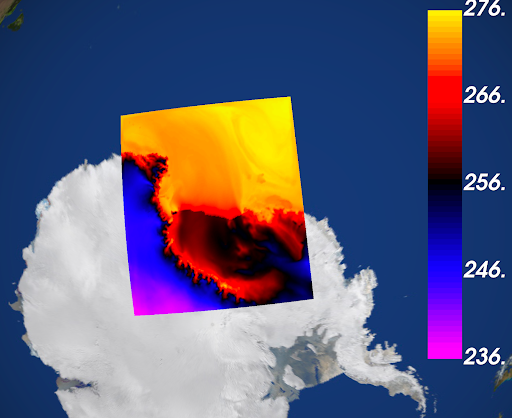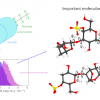Building software solutions for studying air–ice–ocean interactions
The below case study shares some of the technical details and outcomes of the scientific and HPC-focused programming support provided to a research project through NeSI’s Consultancy Service.
This service supports projects across a range of domains, with an aim to lift researchers’ productivity, efficiency, and skills in research computing. If you are interested to learn more or apply for Consultancy support, visit our Consultancy Service page.
Research background
Alena Malyarenko and Alexandra Gossart are research fellows at the Modelling Hub, Victoria University of Wellington, where they contribute to the Antarctic Science Platform MBIE funded project by simulating past and future Antarctic climate scenarios.
Ice–ocean and ice–atmosphere interactions are usually not accurately represented in Global Climate Models. For instance, the Climate Model Intercomparison Program 6 (an international effort to estimate the impact of climate change under various CO2 emission scenarios, Eyring et al., 2016) models still represent an ocean surface that is too warm and too fresh for the Southern Ocean, with too small an annual sea ice extent (Beadling et al., 2020).
The models struggle to represent realistic sea ice cover (Mohrmann et al., 2021) and show a wide spread in the different terms of sea ice formation/dissipation, leading to large uncertainties in the sea ice budget across the different models (Li et al., 2021; Roach et al., 2020).
Regional climate models can be adapted to polar regions, but fully coupled ocean–atmosphere–sea ice (and ice sheets) models are rare. As a result, climate and/or ocean models are usually used in standalone mode (forced by external boundary conditions such as reanalyses or future climate projections) and are therefore unable to reflect the potential feedback between the different components. This is problematic for Antarctica and the Southern Ocean, where the atmosphere, the ocean and the sea ice interact and impact each other in complex ways.
Our P-SKRIPS version 1 model is setup for the Ross Sea domain. This tool enables heat, freshwater, and mass fluxes conservation between its components (PWRF, atmosphere and MITgcm, ocean and sea ice). The Ross Sea is an important location of ice–atmosphere–ocean interactions where relatively small-scale features have an over-proportionate effect on the global ocean circulation: up to 40 % of Antarctic Bottom Water is produced there (Orsi et al., 2002). Therefore, conservation of heat and mass fluxes in the Ross sea is crucial for quantifying air–ice–ocean interactions, now and in the future.
Project challenges
Coupled models combine different components, e.g. atmosphere, ocean and a coupler in a single executable. Each component is typically developed by a different research group and the integration of all the components often requires significant software engineering skills. Porting a coupled model therefore has often been a challenge. Building a new version of a coupled model may take months for a scientist, even if this involves only an update of the operating system and packages.
This project’s aim was to create a software solution that would allow researchers to easily port their model to another platform, and share it with colleagues.
What was done
- NeSI wrote a configuration file that compiles all the software dependencies of the coupled model in an Apptainer container
- NeSI adapted an existing build script to compile the coupled model using the Apptainer container environment
- NeSI provided instructions on how to run the new coupled model, how to update the dependencies and how modify the build script for other executables
Main outcomes
A portable, tuned coupled model that runs on any Intel or AMD platform that supports Apptainer containerisation. The coupled model runs at the same speed as the original model on Māui, but requires 4.3x fewer processors.
Researcher feedback
"We are very grateful to the NeSI team for helping us to automatically build our coupled model in a container, allowing us to be resilient and circumvent any platform changes/updates. We couldn't have done this ourselves and thoroughly enjoyed interacting with the team. Through the consultancy, the team also improved the compilation flags, allowing our model to run much more effectively, which is a huge bonus!"
- Alexandra Gossart and Alena Malyarenko
Do you want to bring your research to the next level? We can help. Send an email to support@nesi.org.nz to learn more about our Consultancy support.







